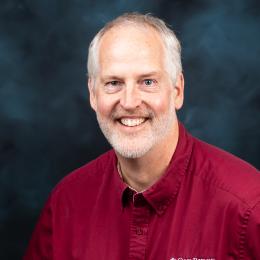Abstract: Chemistry, for many researchers, ends with distinguishing element from element. Stable isotopes, physically separated from one another as further divisions of the elements, extends the range of research possibilities. After the isotope separation process, these enriched isotopes are further purified chemically then stored in their most stable chemical form. Researchers worldwide who utilize isotopically enriched materials contact the National Isotope Development Center at Oak Ridge National Laboratory (ORNL) to obtain these materials in the desired chemical and physical form. Processing isotopes that span the periodic table requires experience and many techniques. Many of the Stable Isotope Materials and Chemistry (SIMC) group’s specialized technical service fabrications can be thought of as a precision custom manufacturing efforts with a total production volume of one unit. Stable isotopes are important for industry, medicine, national security, and research. Isotopes are used as elemental tracers to determine complex reaction pathways, nuclear targets for the fundamentals of nuclear data, and precursors for medical radioisotopes used to diagnose and cure cancer. This presentation shows a diversity of ideas from a convoluted career path being applied for solving complex problems. ORNL has an interesting 80+ year history that started with the Manhattan Project. After WWII, the same instruments used for separating 235U also separated most other elements into enriched isotopes. The US Department of Energy is enacting a new, once-in-a-generation effort that involves building facilities to reinvigorate the nation’s capability to separate and enrich isotopes. Our team uses a diverse set of skills, such as chemistry, engineering, manufacturing, supply chain management, plasma physics, and more. A few use cases will be explored in how isotopes can be transformed into different chemical and physical forms to solve nationally significant challenges.
Biography: Dr. Mike Zach, a Senior Materials Processing Researcher at ORNL, is a technical lead for transforming enriched stable isotopes into the chemical and physical forms required by researchers and producers of radioisotopes. Zach has had an unusual career path by apprenticing as a jeweler and bronze sculptor with a monk in Florence, Italy, and spending a decade in art and retail. He received his baccalaureate from the University of Wisconsin – Stevens Point in 1997 and his MS and PhD from the University of California, Irvine, working in Reg Penner’s group from 1997–2002 with the electrodeposition of nanowires. He was a Miller Postdoctoral Fellow at the University of California, Berkeley, on nanobiogeochemistry projects and a Glenn Seaborg Postdoctoral Fellow at Argonne National Laboratory on superconductivity and magnetism projects. He spent a decade as a professor of analytical chemistry at the University of Wisconsin – Stevens Point, leading an active research program. For the past decade, Zach’s perfect set of skills—formed by his broad background—translated into the ability to turn extremely rare enriched stable isotopes into precision nuclear targets for scientific experiments and precursors for medical radioisotopes.
This work is supported by the U.S. Department of Energy Isotope Program, managed by the Office of Science for Isotope R&D and Production. Resolution Pub ID: 210823

Speaker:
Institution:
Location:

